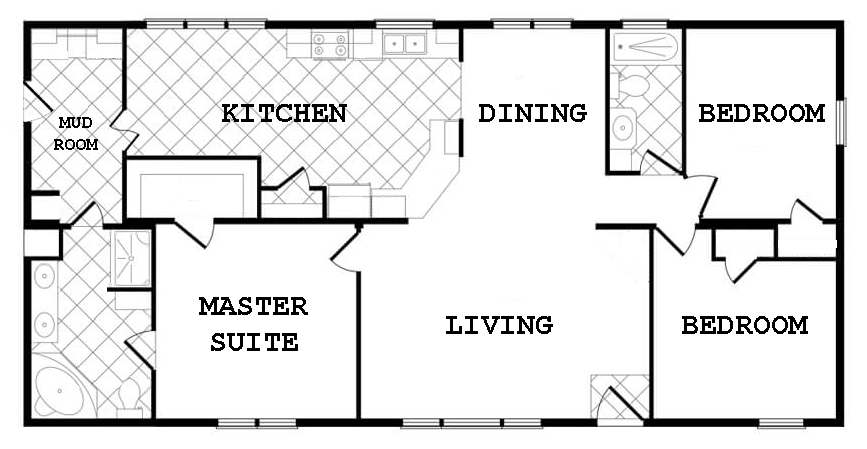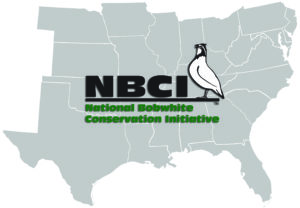As a wildlife biologist focusing on upland game like Northern Bobwhite, it does not take long to hear EVERY reason for their decline. Anything from nest predators or mesocarnivores (e.g., raccoons or skunks), to parasites, cattle egrets, swamp gas, radiation from Area 51, and even fighter jets (a funny story for another time) catch the blame from time-to-time. The truth is, most people are either quick to dismiss or unwilling to admit the two biggest factors making an impact on upland species: weather and us.
Weather is by far the leading driver in the cyclical abundance of these birds in Oklahoma. Drought, heavy rains, late or early freezes, and even our changing climate play a huge role in year-to-year numbers, especially out West. What about the years of ‘good’ weather? Why aren’t we seeing a bumper crop then?? That’s where we come in. Humans play a pretty big role in shaping quail trends, and I don’t mean the impact we make with a shotgun each fall. I am referring to the habitat decisions we make on our properties that impact upland birds; the good news is, there is still plenty of time to make changes and improve your land for quail!
Imagine if you will a three-bedroom house, not a mansion by any means, but a typical family home. Can you live there? Of course. What about with your spouse and two kids, can you all still have plenty of room? Yes!
Now, I want you to imagine that something happens to half of your house: a semi-truck crashes into it, a train de-rails into it, a fire, flood, tornado… anything, you simply now don’t have access to two of the bedrooms, half the kitchen, and half of the living-room. Can you still live there, all four of you? It may be cramped, but you could survive there; importantly, you would still have a place to sleep, eat, relax, and freshen up.
Now imagine that the roof starts leaking in the master bedroom, can you still live there? You and the family are probably going to have to move out until some repairs are made. But, you wouldn’t move out of your home just because of a leaky roof, right? Under normal circumstances, probably not, but remember in this scenario you had already lost half of your house… half of your habitat.

Just like our friend Mr. Bob White, you too, have now experienced habitat loss. And all the reasons I mentioned earlier? Well, those are leaky roofs. The main difference between you and bobwhite in this analogy is that quail don’t have half a house, they have a coat closet. The amount of habitat loss they have experienced makes every little issue seem like a huge problem, when in fact the real issue is the lack of suitable habitat and the fact that they have been left with a scrap of actual usable space..
When I talk with a landowner I typically hear, “nothing has changed on this property since the 1900s. The quail just… disappeared.” But have you ever watched a friend or relative’s child grow up? You go about a year without seeing them and are stunned by how much bigger they have gotten. But most times these changes are subtle, occurring over decades, and can be hard to catch until it’s already become an issue; other times, change happens overnight. So how do we recognize these changes or start making improvements? I am not going to try to list out all the issues we can try to tackle. In Oklahoma alone there are too many for one list. Instead, I am going to hit a on a few categories that apply across the Northern Bobwhite range.
Invasive or ‘Improved’ Species: Bermuda grass, fescue, sericea lespedeza, eastern red cedar, Callery or Bradford pear, kudzu; these are a few prime examples of species we once believed were better suited for our needs than what occurred naturally at some point. Few of us thought, or realized, what the long-term consequences would be to our native grasslands and forests. I won’t go into why each one of these are bad for quail, but simply put, the footprint each of these take up might as well be a Wal-Mart parking lot to a bobwhite. These parking lots, or dead zones, provide few of the resources bobwhite need to survive and reproduce.
Prescribed Fire: Fire can be a scary thing for a landowner, especially with the abundance of wildfires in the west. But prescribed fire can also be a tool for managers. Have you ever heard the expression to ‘fight fire with fire’? Prescribed fire can not only help rid a property of the species listed above, but it also helps to restore native plant communities, and remove the fuel load or amount of dead plant material that drives wild fires. Some of the fires in the West could have been mitigated or even prevented with proper fuel management and/or prescribed fire.
Timber thinning: Again, I won’t go into state-by-state specifics, but if you manage or own a closed canopy forest and want to bring back bobwhites, you are going to have to cut down some trees. Timber thinning can boost shrub, grass, and forb growth, improve soil quality, reduce wildfire risk, and be extremely beneficial to wildlife by providing more food and shelter.
Leaky Roofs: Let’s talk about those leaky roofs. If we as land managers start to make changes to improve quail habitat, we are essentially taking away predator habitat. Every brush pile you get rid of, stand of timber that you thin, prescribed fire that you perform, or anything cloaked in kudzu that is treated… that takes away habitat for a potential predator. When we do these things and allow native grasses and forbs to reclaim their rightful place on the landscape, we are also providing better nutrients to our wildlife. If we eat nothing but fast food, we are probably not going to be very healthy; but if we eat a nutritious, balanced diet, we have a much better chance at a healthy life. Having a smorgasbord of insects and native seeds gives quail a much better chance of combatting parasites or disease.
While we cannot change the weather, we can change our properties. Sometimes it can be overwhelming to even come up with a starting point, but how do you eat an elephant? One bite at a time. How do we improve quail habitat and quail numbers? One three-bedroom house at a time; making sure they have a place to sleep, eat, relax, and even freshen up. For more information on habitat management check out the NBCI’s Comprehensive Guide to Creating, Improving, And Managing Bobwhite Habitat.

Tell Judkins
Upland Game Biologist & Quail Coordinator
Oklahoma Department of Wildlife Conservation




